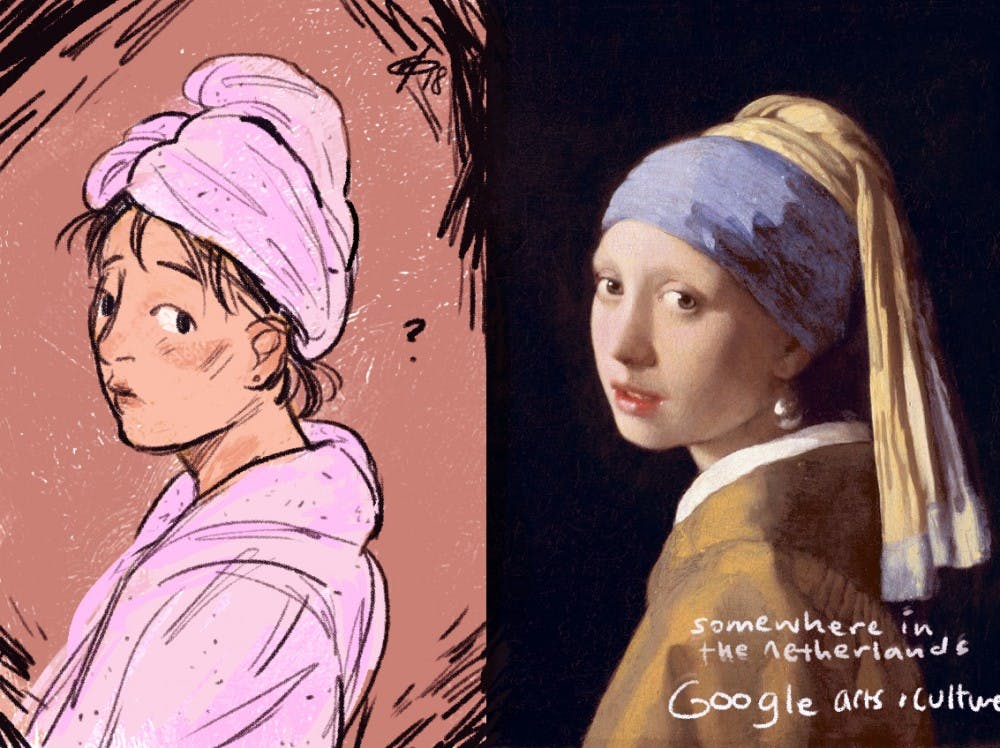So, apparently, I look like Rembrandt. This isn’t some metaphorical comparison nor does it have some deep symbolic meaning. When I say I look like Rembrandt, I mean I literally look like Rembrandt—a laughing Rembrandt, to be precise. Or at least that’s what the app “Google Arts and Culture” told me. I’d dispute it, but even just looking at the comparison, I can’t help but see the uncanny resemblance.
This app is only one morsel, a speck in showing the intersection between visual arts and technology, a cross between tradition and innovation. In terms of the app itself, “Google Arts and Culture” is self–described as “an online platform through which the public can access high–resolution images of artworks housed in the initiative’s partner museums.” Upload a selfie and it will tell you which famous portrait painting you look like. Though the functional roles of the app may seem frivolous—silly even, it’s transformed how we interact with art.
The reason this transformation is so important is this: think back to the last time you went to a museum. For many, it was probably that one night for the toga party during NSO freshman year. And let’s be honest: were you really looking at the art or were you scouting the room, hoping to meet new people and friends?
Museums are so often thought of as distant institutions, far off and of little interest. They house artworks that bear little relevance to the business of our daily routines. Even at Penn, the terms “Institute of Contemporary Art” or “Arthur Ross Gallery” hold little recognition, if not meaning. Because art is so open to interpretation, it may seem at times intangible, and thus the institutions themselves, intangible and incomprehensible. But that shouldn’t be the case. Art is not supposed to be seen as something we jump for, yet always seemingly out of reach.
The use of technology as another avenue for presenting this art shifts that. It stimulates the visual arts. It relates the arts back to us—which, to be fair, is what draws our attention. In a way, it democratizes art by actively engaging its users.
There is, of course, the argument to be made that by digitizing art, that strips the work of its first–hand sensory experience—the emotion that strikes the viewer at first sight and the changes at second, third, and fourth sight. But with the dawn of technology setting in, the idea of bringing those impressions through tiny pixels is not that far off. For example, in the Tate Sensorium, a display of four paintings in the Tate collection (a national British art collection), participants don't just see the art. They taste it. They smell it. They hear it. A smoky–bitter scent of a chocolate bar wafts through the room to accentuate the dismal mood. The touch of a painting reveals the rough texture, which in turn, mirrors the painting’s grittiness and feelings of isolation. A hint of sweetness enters the mouth, symbolizing the light blue sky. It won’t be long before that sensation is made possible through our tiny little mobile devices.
If you don’t have the time to go to a museum, there’s still really no excuse for not appreciating the arts. Take out your phone. Take a selfie. Even just doing that will give you just a tiny taste of the beauty of the arts.







